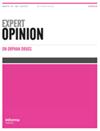Duodenal adenocarcinoma: neoadjuvant and adjuvant therapy strategies
IF 0.8
4区 医学
Q4 PHARMACOLOGY & PHARMACY
引用次数: 1
Abstract
ABSTRACT Introduction: Duodenal adenocarcinoma (DA) is a relatively rare gastrointestinal malignancy associated with poor outcomes. The mainstay of treatment is surgical resection with regional lymphadenectomy but recurrence rates remain high. Due to the relatively low incidence of DA, the lack of randomized controlled trials, and its inclusion with heterogeneous groups of periampullary and other small bowel cancers, strong evidence for the use of neoadjuvant or adjuvant treatment approaches is lacking. Areas covered: The purpose of this article is to review the existing literature on neoadjuvant and adjuvant therapy options along with surgical options for patients with DA. Expert opinion: The primary management of localized DA is surgical resection with negative margins and regional lymphadenectomy. Adjuvant therapy should be recommended for all patients with high-risk pathologic features such as positive lymph nodes or microscopically positive margins. The use of neoadjuvant therapy should be reserved for those patients with locally advanced disease who require downstaging to facilitate resectability. Nevertheless, given the relative rarity of DA, the available literature to guide optimal multimodality treatment decisions is minimal and additional research is needed. In the meantime, patients with DA should be treated at experienced tertiary centers by multidisciplinary oncology teams.十二指肠腺癌:新辅助和辅助治疗策略
摘要简介:十二指肠腺癌是一种相对罕见的胃肠道恶性肿瘤,预后较差。主要的治疗方法是手术切除局部淋巴结切除术,但复发率仍然很高。由于DA的发病率相对较低,缺乏随机对照试验,且其与壶腹周围癌和其他小肠癌的异质性组相结合,因此缺乏使用新辅助或辅助治疗方法的有力证据。所涵盖的领域:本文的目的是回顾关于DA患者的新辅助和辅助治疗方案以及手术方案的现有文献。专家意见:局限性DA的主要治疗方法是阴性边缘手术切除和区域淋巴结切除。对于所有具有高风险病理特征(如淋巴结阳性或镜检阳性边缘)的患者,应推荐辅助治疗。新辅助治疗的使用应保留给那些需要降低分期以促进可切除性的局部晚期疾病患者。然而,鉴于DA相对罕见,指导最佳多模式治疗决策的现有文献很少,还需要更多的研究。同时,DA患者应在经验丰富的三级中心接受多学科肿瘤学团队的治疗。
本文章由计算机程序翻译,如有差异,请以英文原文为准。
求助全文
约1分钟内获得全文
求助全文
来源期刊

Expert Opinion on Orphan Drugs
PHARMACOLOGY & PHARMACY-
CiteScore
2.30
自引率
0.00%
发文量
8
期刊介绍:
Expert Opinion on Orphan Drugs is an international, peer-reviewed journal that covers all aspects of R&D on rare diseases and orphan drugs.
 求助内容:
求助内容: 应助结果提醒方式:
应助结果提醒方式:


